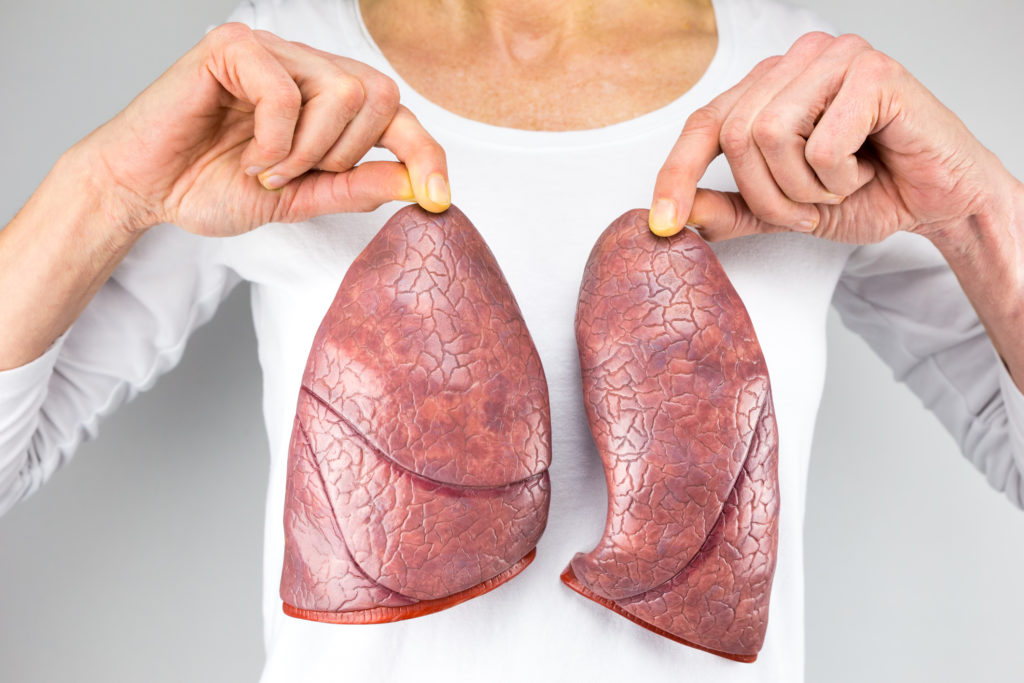Lung
Approximately one in 16 women in the United States will develop lung cancer in her life. Lung cancer occurs when irregular cells grow rapidly within the lung tissues. Sometimes it begins in stealth mode with no symptoms.

There are two main types of lung cancer: small-cell and non-small cell. Small-cell is divided into two stages: limited (confined to one lung and possibly nearby lymph nodes) and extensive (cancer has spread to the other lung and beyond). Non-small cell is assigned to a stage of one through four, depending on how far it has spread.
Lung cancer is one of the most preventable types of cancer — don’t smoke! Smoking can cause or worsen respiratory disorders and negatively impacts your overall health. Success in quitting smoking is the result of planning and commitment, not luck. Your doctor can help you customize a strategy which allows you to kick the habit once and for all. Today there are many different aids to help you quit smoking.
| RISK FACTORS | SYMPTOMS | SCREENINGS | STAGES | TREATMENT OPTIONS |
| smoking (main cause), secondhand smoke, work exposures, radon gas, air pollution, family history, diet, lifestyle | persistent cough, chest pain, breathing difficulties, hoarseness, flu-like symptoms | chest x-ray, sputum test | location of original tumor, how many tumors and their size, whether it has spread to lymph nodes, cell appearance under microscope, if it has spread to other body parts, staging system is different for the two types of lung cancerSmall Cell – limited and extensive stages
Non-Small Cell – (use TNM system) (N) Spread to lymph nodes (M) Metastasis – whether cancer has spread |
surgery, chemotherapy, radiation, targeted therapies |
